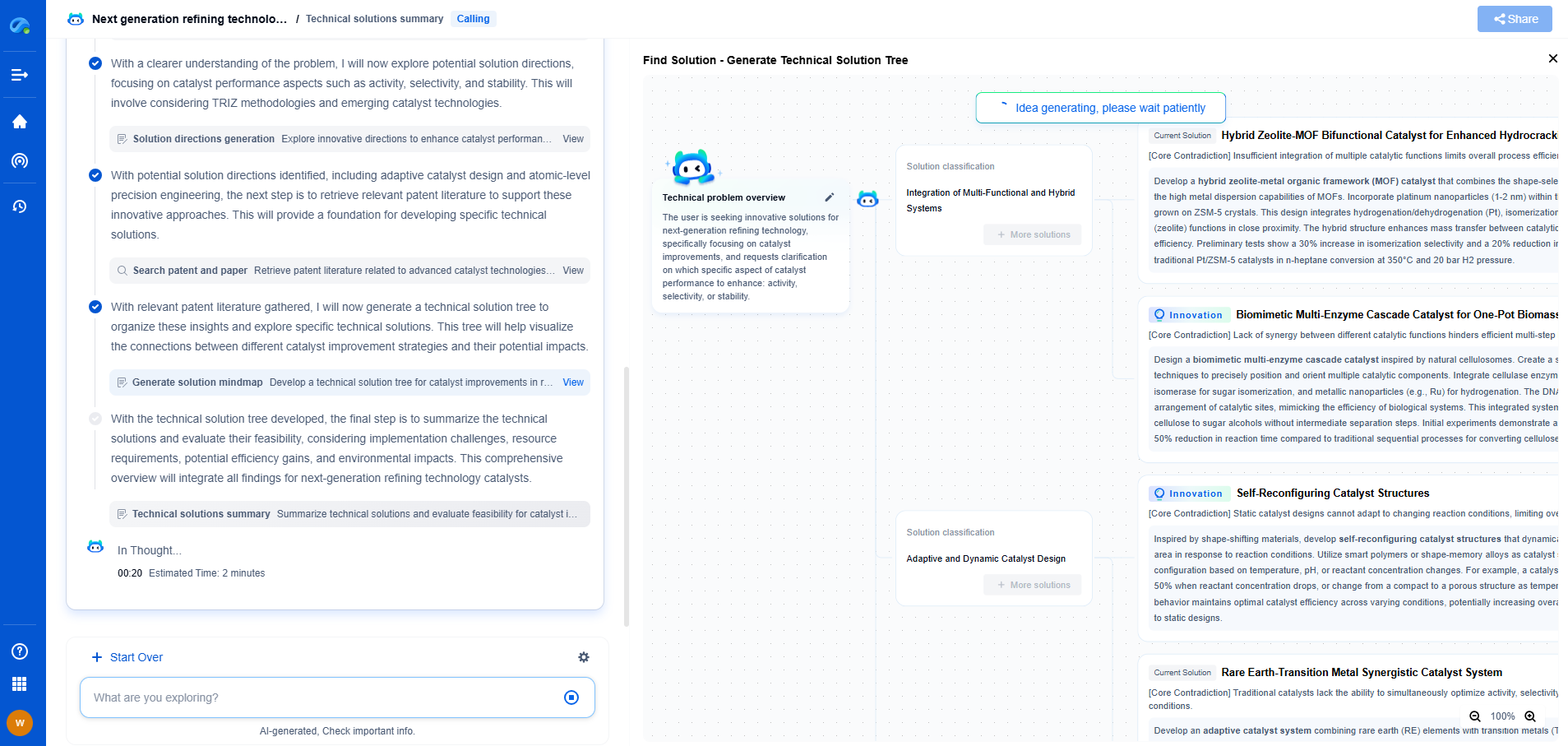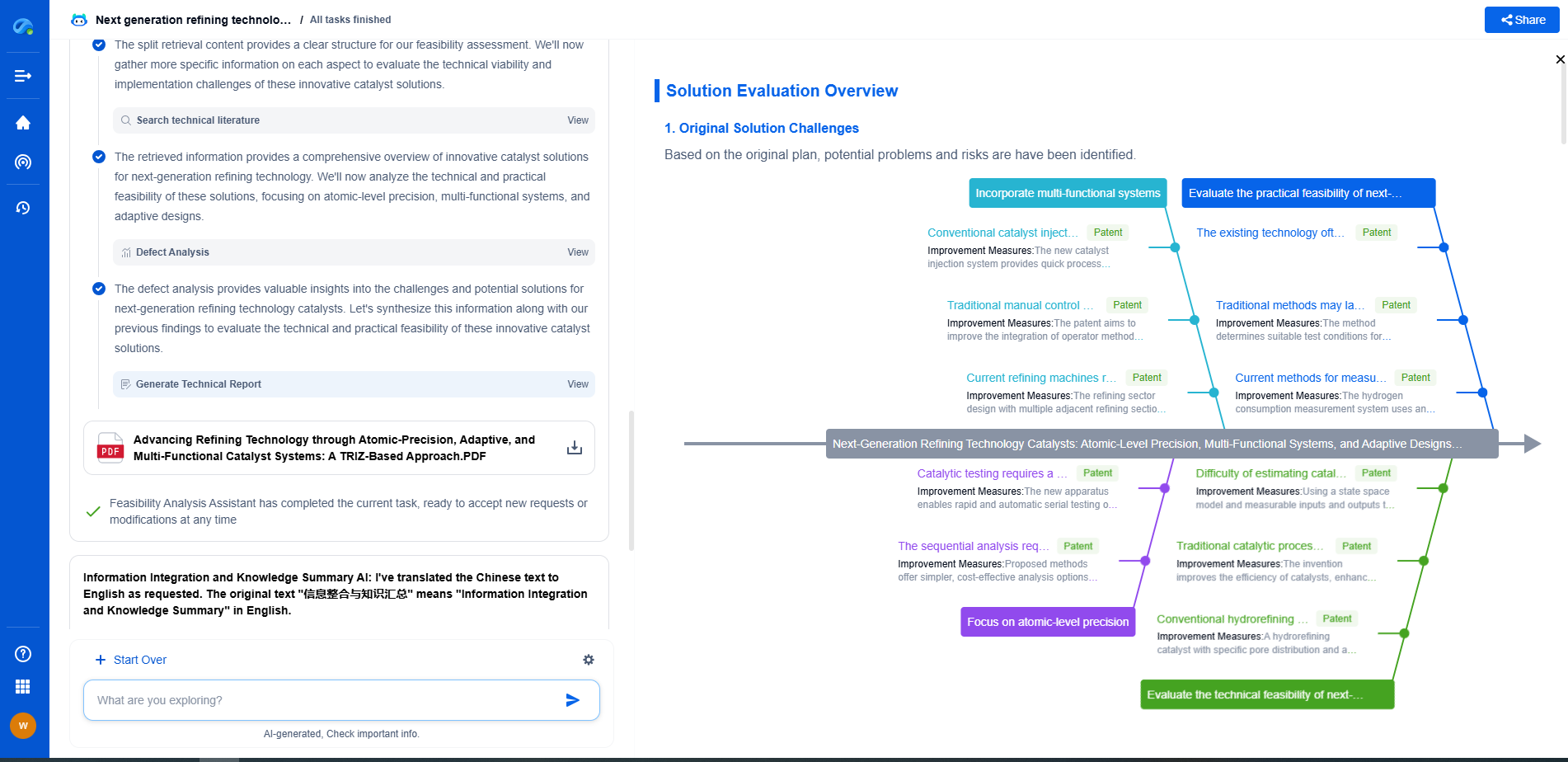Aerospace Gear Standards: Beyond ISO to Specialized Requirements
JUL 2, 2025 |
Introduction to Aerospace Gear Standards
The aerospace industry is one of the most demanding sectors when it comes to quality and precision. At the heart of many aerospace machines and vehicles are gears, which must withstand extreme conditions while maintaining flawless performance. The International Organization for Standardization (ISO) has established a set of standards that apply to gears in general. However, the unique demands of aerospace applications often require standards that go beyond those provided by ISO.
Understanding ISO Standards for Gears
ISO standards provide a comprehensive framework that ensures quality, safety, and efficiency across a wide range of industries. For gears, these standards cover aspects such as design, materials, manufacturing processes, and testing methods. ISO 1328, for example, specifies the geometry of gears and criteria for their quality. While these standards are crucial for maintaining baseline quality, they are often not sufficient for the specialized requirements of aerospace applications.
The Limitations of General Standards
The problem with relying solely on ISO standards in the aerospace sector is that they are not specifically tailored to the unique challenges that gears face in this field. Aerospace gears must operate under high loads, extreme temperatures, and fluctuating pressure conditions. Furthermore, they must be lightweight yet durable, adding another layer of complexity to their design and manufacture. As a result, the general nature of ISO standards can limit innovation and optimization in aerospace gear technology.
Specialized Requirements in Aerospace
Aerospace gear manufacturers often go beyond ISO standards, adhering to more specialized requirements to ensure optimal performance and safety. These requirements may be dictated by governmental regulations, such as those from the Federal Aviation Administration (FAA) in the United States or the European Union Aviation Safety Agency (EASA). Additionally, industry-specific organizations, like the Society of Automotive Engineers (SAE), develop standards that address the intricacies of aerospace applications.
Customized Standards for Aerospace Applications
One of the primary focuses of specialized aerospace standards is material selection. Aerospace gears are typically made from advanced materials, like titanium and high-strength alloys, to achieve the necessary balance between weight and strength. Furthermore, surface treatments and coatings are often applied to enhance durability and performance. Specialized standards provide detailed guidelines on these aspects, ensuring that aerospace gears can meet the extreme demands they face.
Another critical area is the design and testing of gears. Aerospace applications often require custom gear designs to fit specific spatial constraints or to deliver unique performance characteristics. Specialized standards guide engineers in creating these designs, as well as in developing rigorous testing protocols that simulate the operational environments of aerospace gears.
The Role of Innovation and Collaboration
The continuous evolution of aerospace technology necessitates a dynamic approach to gear standards. Manufacturers, engineers, and regulatory bodies must work in tandem to develop and update standards that reflect the latest technological advancements and industry needs. This collaborative approach often leads to the creation of proprietary standards that are used by leading aerospace companies.
Innovation is also driven by the growing demand for sustainable materials and processes. As the aerospace industry moves towards greener technologies, specialized gear standards are adapting to include guidelines for environmentally friendly practices, such as recycling materials and reducing emissions during manufacturing.
Conclusion
While ISO standards provide a crucial foundation for gear quality and safety, the aerospace industry requires a more nuanced approach to meet its unique challenges. Specialized standards, developed through a collaborative, innovation-driven process, ensure that aerospace gears can achieve the highest levels of performance, reliability, and safety. As the industry continues to evolve, these specialized standards will play an increasingly important role in shaping the future of aerospace technology.
Boost Innovation in Gears & Transmissions with Patsnap Eureka
Whether you're designing a next-gen planetary gearbox or optimizing gear tooth profiles for noise reduction, keeping up with the fast-evolving landscape of mechanical transmissions requires more than just experience—it takes insight, speed, and smart tools.
Patsnap Eureka, our intelligent AI assistant built for R&D professionals in high-tech sectors, empowers you with real-time expert-level analysis, technology roadmap exploration, and strategic mapping of core patents—all within a seamless, user-friendly interface.
Whether you're streamlining a manual transmission system or exploring electromechanical actuation, Patsnap Eureka helps your team move from concept to novelty faster than ever.
👉 Experience Eureka in action—request a personalized demo today and see how AI can revolutionize your gear innovation workflows.
- R&D
- Intellectual Property
- Life Sciences
- Materials
- Tech Scout
- Unparalleled Data Quality
- Higher Quality Content
- 60% Fewer Hallucinations
Browse by: Latest US Patents, China's latest patents, Technical Efficacy Thesaurus, Application Domain, Technology Topic, Popular Technical Reports.
© 2025 PatSnap. All rights reserved.Legal|Privacy policy|Modern Slavery Act Transparency Statement|Sitemap|About US| Contact US: help@patsnap.com

